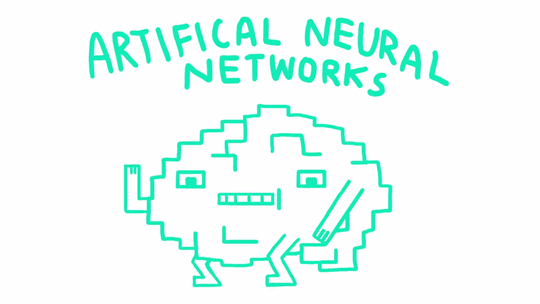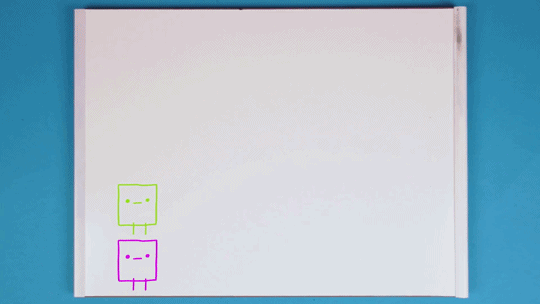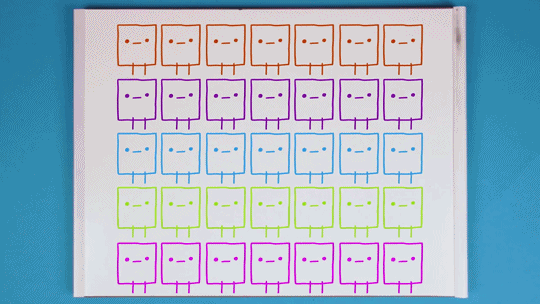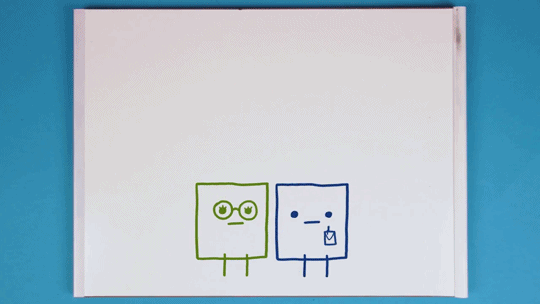Yaser Khalifa is a man with many years of experience as an electrical and computer engineer. After graduating from Alexandria University in Alexandria, Egypt, Yaser continued his education by pursuing his PhD in Electrical Engineering at Cardiff University. Upon graduation he leapt into the working world and has since worked with teams made up of people ranging from engineers working on super conductors to fellow professors at SUNY New Paltz. Yaser also has had over 40 papers published in a variety of educational publications. He has worked with such companies as General Electric as an electrical engineer consultant with their global research division as well as numerous others in different capacities. When not working you can find Yaser engaging in his other passions. He is an avid outdoors man and loves to mountain bike whenever possible. He both leads mountain biking tours as well as engages simply for pleasure. He was introduced to the sport by a friend at SUNY New Paltz and has since then volunteered as a biking guide with Minnewaska State Park, among others.
Don't wanna be here? Send us removal request.
Text
If You Plug Twitter Into a Digital Avatar, Can You Live Forever?
Klint Finley
New article from me at Wired:
In one episode of Black Mirror — the British television series that explores the near future of technology with an edginess reminiscent of The Twilight Zone — a woman’s husband dies, and she replaces him with a robot.
This walking automaton looks like him and talks like him, and it even acts like him, after plugging into his Twitter account and analyzing every tweet he ever sent.
Yes, that’s a far cry from reality, but it’s not as far as you might think. With an online service called Lifenaut, an operation called the Terasem Movement Foundation offers a means of digitally cloning yourself through a series of personality tests and data from your social media profiles. The idea is to create an online version of you that can live forever, a digital avatar that even future generations can talk to and interact with. Eventually, Terasem wants to transform these avatars into walking, talking robots — just like on Black Mirror. And today, it provides a more primitive version, for free. […]
But Dale Carrico, a lecturer in the Department of Rhetoric at the University of California at Berkeley, is skeptical. To say the least. He says that the folks at Terasem and other “transhumanists” — those who believe the human body can be radically enhanced or even transcended entirely through technology — are pursing pipe dreams. He doesn’t even give them create for trying. “The trying is evidence only of the depth of their misunderstanding, not of their worthy diligence,” he says. Simply put, an avatar isn’t a person — in any meaningful sense.
Full Story: Wired Enterprise: If You Plug Twitter Into a Digital Avatar, Can You Live Forever?
My avatar is embedded in the story so you can chat with it.
25 notes
·
View notes
Text
Computer Chips That Work Like a Brain Are Coming — Just Not Yet
Klint Finley
I wrote for Wired about computer chips designed specifically for building neural networks:
Qualcomm is now preparing a line of computer chips that mimic the brain. Eventually, the chips could be used to power Siri or Google Now-style digital assistants, control robotic limbs, or pilot self-driving cars and autonomous drones, says Qualcomm director of product management Samir Kumar.
But don’t get too excited yet. The New York Times reported this week that Qualcomm plans to release a version of the chips in the coming year, and though that’s true, we won’t see any real hardware anytime soon. “We are going to be looking for a very small selection of partners to whom we’d make our hardware architecture available,” Kumar explains. “But it will just be an emulation of the architecture, not the chips themselves.”
Qualcomm calls the chips, which were first announced back in October, Zeroth, after the Isaac Asimov’s zeroth law of robotics: “A robot may not harm humanity, or, by inaction, allow humanity to come to harm.”
The Zeroth chips are based on a new architecture that radically departs from the architectures that have dominated computing for the past few decades. Instead, it mimics the structure of the human brain, which consists of billions of cells called neurons that work in tandem. Kumar explains that although the human brain does its processing much more slowly than digital computers, it’s able to complete certain types of calculations much more quickly and efficiently than a standard computer, because it can do many calculations at once.
Even the world’s largest supercomputers are able to use “only” one million processing cores at a time.
Full Story: Wired: Computer Chips That Work Like a Brain Are Coming — Just Not Yet
See also:
Palm Pilot Inventor Wants to Open Source the Human Brain
Yorkshire Pigs Control Computer Gear With Brain Waves
30 notes
·
View notes
Video
youtube
Quadcopters combined with machine learning algorithms.
12 notes
·
View notes
Photo

Google is using machine learning to teach robots how to grasp random objects.
Google is now using these robots to train a deep convolutional neural network (a technique that’s all the rage in machine learning right now) to help its robots predict the outcome of their grasps based on the camera input and motor commands. It’s basically hand-eye coordination for robots.
Check it out here.
115 notes
·
View notes
Link
Awesome to see IBM’s Watson and musicians working together!
25 notes
·
View notes
Photo

Netflix algorithms could help NASA identify planets that support life
Researchers at the University of Toronto Scarborough have developed a new approach to identifying stable planetary systems.
It’s based on the machine learning artificial intelligence Netflix uses.
Machine learning is a type of artificial intelligence that allows computers to learn new functions without being programmed.
This is how Netflix can make scarily accurate predictions of what you’re interested in watching without you telling it.
Now researchers are looking to implement the same idea in the realm of astrophysics.
They will use previously collected data to predict a system’s stability and determine information like a planet’s mass or how elliptical its orbit is. Read more
follow @the-future-now
402 notes
·
View notes
Text
Open Sourcing a Deep Learning Solution for Detecting NSFW Images
By Jay Mahadeokar and Gerry Pesavento
Automatically identifying that an image is not suitable/safe for work (NSFW), including offensive and adult images, is an important problem which researchers have been trying to tackle for decades. Since images and user-generated content dominate the Internet today, filtering NSFW images becomes an essential component of Web and mobile applications. With the evolution of computer vision, improved training data, and deep learning algorithms, computers are now able to automatically classify NSFW image content with greater precision.
Defining NSFW material is subjective and the task of identifying these images is non-trivial. Moreover, what may be objectionable in one context can be suitable in another. For this reason, the model we describe below focuses only on one type of NSFW content: pornographic images. The identification of NSFW sketches, cartoons, text, images of graphic violence, or other types of unsuitable content is not addressed with this model.
To the best of our knowledge, there is no open source model or algorithm for identifying NSFW images. In the spirit of collaboration and with the hope of advancing this endeavor, we are releasing our deep learning model that will allow developers to experiment with a classifier for NSFW detection, and provide feedback to us on ways to improve the classifier.
Our general purpose Caffe deep neural network model (Github code) takes an image as input and outputs a probability (i.e a score between 0-1) which can be used to detect and filter NSFW images. Developers can use this score to filter images below a certain suitable threshold based on a ROC curve for specific use-cases, or use this signal to rank images in search results.

Convolutional Neural Network (CNN) architectures and tradeoffs
In recent years, CNNs have become very successful in image classification problems [1] [5] [6]. Since 2012, new CNN architectures have continuously improved the accuracy of the standard ImageNet classification challenge. Some of the major breakthroughs include AlexNet (2012) [6], GoogLeNet [5], VGG (2013) [2] and Residual Networks (2015) [1]. These networks have different tradeoffs in terms of runtime, memory requirements, and accuracy. The main indicators for runtime and memory requirements are:
Flops or connections – The number of connections in a neural network determine the number of compute operations during a forward pass, which is proportional to the runtime of the network while classifying an image.
Parameters -–The number of parameters in a neural network determine the amount of memory needed to load the network.
Ideally we want a network with minimum flops and minimum parameters, which would achieve maximum accuracy.
Training a deep neural network for NSFW classification
We train the models using a dataset of positive (i.e. NSFW) images and negative (i.e. SFW – suitable/safe for work) images. We are not releasing the training images or other details due to the nature of the data, but instead we open source the output model which can be used for classification by a developer.
We use the Caffe deep learning library and CaffeOnSpark; the latter is a powerful open source framework for distributed learning that brings Caffe deep learning to Hadoop and Spark clusters for training models (Big shout out to Yahoo’s CaffeOnSpark team!).
While training, the images were resized to 256x256 pixels, horizontally flipped for data augmentation, and randomly cropped to 224x224 pixels, and were then fed to the network. For training residual networks, we used scale augmentation as described in the ResNet paper [1], to avoid overfitting. We evaluated various architectures to experiment with tradeoffs of runtime vs accuracy.
MS_CTC [4] – This architecture was proposed in Microsoft’s constrained time cost paper. It improves on top of AlexNet in terms of speed and accuracy maintaining a combination of convolutional and fully-connected layers.
Squeezenet [3] – This architecture introduces the fire module which contain layers to squeeze and then expand the input data blob. This helps to save the number of parameters keeping the Imagenet accuracy as good as AlexNet, while the memory requirement is only 6MB.
VGG [2] – This architecture has 13 conv layers and 3 FC layers.
GoogLeNet [5] – GoogLeNet introduces inception modules and has 20 convolutional layer stages. It also uses hanging loss functions in intermediate layers to tackle the problem of diminishing gradients for deep networks.
ResNet-50 [1] – ResNets use shortcut connections to solve the problem of diminishing gradients. We used the 50-layer residual network released by the authors.
ResNet-50-thin – The model was generated using our pynetbuilder tool and replicates the Residual Network paper’s 50-layer network (with half number of filters in each layer). You can find more details on how the model was generated and trained here.

Tradeoffs of different architectures: accuracy vs number of flops vs number of params in network.
The deep models were first pre-trained on the ImageNet 1000 class dataset. For each network, we replace the last layer (FC1000) with a 2-node fully-connected layer. Then we fine-tune the weights on the NSFW dataset. Note that we keep the learning rate multiplier for the last FC layer 5 times the multiplier of other layers, which are being fine-tuned. We also tune the hyper parameters (step size, base learning rate) to optimize the performance.
We observe that the performance of the models on NSFW classification tasks is related to the performance of the pre-trained model on ImageNet classification tasks, so if we have a better pretrained model, it helps in fine-tuned classification tasks. The graph below shows the relative performance on our held-out NSFW evaluation set. Please note that the false positive rate (FPR) at a fixed false negative rate (FNR) shown in the graph is specific to our evaluation dataset, and is shown here for illustrative purposes. To use the models for NSFW filtering, we suggest that you plot the ROC curve using your dataset and pick a suitable threshold.

Comparison of performance of models on Imagenet and their counterparts fine-tuned on NSFW dataset.
We are releasing the thin ResNet 50 model, since it provides good tradeoff in terms of accuracy, and the model is lightweight in terms of runtime (takes < 0.5 sec on CPU) and memory (~23 MB). Please refer our git repository for instructions and usage of our model. We encourage developers to try the model for their NSFW filtering use cases. For any questions or feedback about performance of model, we encourage creating a issue and we will respond ASAP.
Results can be improved by fine-tuning the model for your dataset or use case. If you achieve improved performance or you have trained a NSFW model with different architecture, we encourage contributing to the model or sharing the link on our description page.
Disclaimer: The definition of NSFW is subjective and contextual. This model is a general purpose reference model, which can be used for the preliminary filtering of pornographic images. We do not provide guarantees of accuracy of output, rather we make this available for developers to explore and enhance as an open source project.
We would like to thank Sachin Farfade, Amar Ramesh Kamat, Armin Kappeler, and Shraddha Advani for their contributions in this work.
References:
[1] He, Kaiming, Xiangyu Zhang, Shaoqing Ren, and Jian Sun. “Deep residual learning for image recognition” arXiv preprint arXiv:1512.03385 (2015).
[2] Simonyan, Karen, and Andrew Zisserman. “Very deep convolutional networks for large-scale image recognition.”; arXiv preprint arXiv:1409.1556(2014).
[3] Iandola, Forrest N., Matthew W. Moskewicz, Khalid Ashraf, Song Han, William J. Dally, and Kurt Keutzer. “SqueezeNet: AlexNet-level accuracy with 50x fewer parameters and 1MB model size.”; arXiv preprint arXiv:1602.07360 (2016).
[4] He, Kaiming, and Jian Sun. “Convolutional neural networks at constrained time cost.” In Proceedings of the IEEE Conference on Computer Vision and Pattern Recognition, pp. 5353-5360. 2015.
[5] Szegedy, Christian, Wei Liu, Yangqing Jia, Pierre Sermanet,Scott Reed, Dragomir Anguelov, Dumitru Erhan, Vincent Vanhoucke, and Andrew Rabinovich. “Going deeper with convolutions” In Proceedings of the IEEE Conference on Computer Vision and Pattern Recognition, pp. 1-9. 2015.
[6] Krizhevsky, Alex, Ilya Sutskever, and Geoffrey E. Hinton. “Imagenet classification with deep convolutional neural networks” In Advances in neural information processing systems, pp. 1097-1105. 2012.
142 notes
·
View notes
Link
A great introduction to how machine learning and tools like Google Translate work.
We can come up with an encoding that represents every possible different sentence as a series of unique numbers.
To generate this encoding, we’ll feed the sentence into the RNN [Recumbent Neural Network], one word at time. The final result after the last word is processed will be the values that represent the entire sentence:
Great, so now we have a way to represent an entire sentence as a set of unique numbers! We don’t know what each number in the encoding means, but it doesn’t really matter. As long as each sentence is uniquely identified by it’s own set of numbers, we don’t need to know exactly how those numbers were generated.
Let’s Translate!
Ok, so we know how to use an RNN to encode a sentence into a set of unique numbers. How does that help us? Here’s where things get really cool!
What if we took two RNNs and hooked them up end-to-end? The first RNN could generate the encoding that represents a sentence. Then the second RNN could take that encoding and just do the same logic in reverse to decode the original sentence again:
Of course being able to encode and then decode the original sentence again isn’t very useful. But what if (and here’s the big idea!) we could train the second RNN to decode the sentence into Spanish instead of English? We could use our parallel corpora training data to train it to do that:
And just like that, we have a generic way of converting a sequence of English words into an equivalent sequence of Spanish words!
This is a powerful idea:
This approach is mostly limited by the amount of training data you have and the amount of computer power you can throw at it. Machine learning researchers only invented this two years ago, but it’s already performing as well as statistical machine translation systems that took 20 years to develop.
The full article also has diagrams, which I’d recommend. Also related: this article about how Google Translate uses vectors.
110 notes
·
View notes
Link
Google’s X Lab designed a particular neural network to discern whether an algorithm could learn to recognize faces without being fed information on exactly what a face was. It did great at that task.
It also found cat videos quite well:
The “brain” simulation was exposed to 10 million randomly selected YouTube video thumbnails over the course of three days and, after being presented with a list of 20,000 different items, it began to recognize pictures of cats using a “deep learning” algorithm. This was despite being fed no information on distinguishing features that might help identify one.
On the surface, it’s a joke about the impending cat video singularity. But it’s a pretty awesome example of machine learning, too. It means that with careful programming, a synthetic network can learn fairly advanced patterns in completely novel data, like cat faces, or what a cat even IS.
232 notes
·
View notes
Photo

Can you tell if your therapist has empathy?
“And how does that make you feel?”
Empathy is the foundation of therapeutic intervention. But how can you know if your therapist is or will be empathetic? Technology developed by researchers from USC, the University of Washington and the University of Utah can tell you.
Leveraging developments in automatic speech recognition, natural language processing and machine learning, researchers developed software to detect “high-empathy” or “low-empathy” speech by analyzing more than 1,000 therapist-patient sessions. The researchers designed a machine-learning algorithm that takes speech as its input to automatically generate an empathy score for each session.
The methodology is documented in a forthcoming article titled “Rate My Therapist: Automated Detection of Empathy in Drug and Alcohol Counseling via Speech and Language Processing.” According to the authors, it’s the first study of its kind to record therapy sessions and automatically determine the quality of a session based on a single characteristic. The study appears in the December issue of PLoS ONE. Some things don’t change
Currently, there are very few ways to assess the quality of a therapy session. In fact, according to the researchers, the methods for evaluating therapy have remained unchanged for 70 years. Methods requiring third-party human evaluators are time-consuming and affect the privacy of each session.
Instead, imagine a natural language processing app like SIRI listening in for the right phrases and vocal qualities. The researchers are building on a new field in engineering and computer science called behavioral signal processing, which “utilizes computational methods to assist in human decision-making about behavioral phenomena.
The authors taught their algorithm to recognize empathy via data from training sessions for therapists, specifically looking at therapeutic interactions with individuals coping with addiction and alcoholism. Using automatic speech recognition and machine learning-based models, the algorithm then automatically identified select phrases that would indicate whether a therapist demonstrated high or low empathy.
Key phrases such as: “it sounds like,” “do you think,” and “what I’m hearing,” indicated high empathy, while phrases such as “next question,” “you need to” and “during the past” were perceived as low empathy by the computational model.
“Technological advances in human behavioral signal processing and informatics promise to not only scale up and provide cost savings through automation of processes that are typically manual, but enable new insights by offering tools for discovery,” said Shrikanth Narayanan, the study’s senior author and professor at the USC Viterbi School of Engineering. “This particular study gets at a hidden mental state and what this shows is that computers can be trained to detect constructs like empathy using observational data.”
Narayanan’s team in the Signal Analysis and Interpretation Lab at USC Viterbi continues to develop more advanced models — giving the algorithm the capacity to analyze diction, tone of voice, the musicality of one’s speech (prosody), as well as how the cadence of one speaker in conversation is echoed with another (for example, when a person talks fast and the listener’s oral response mirrors the rhythm with quick speech). Quality treatment
In the near term, the researchers are hoping to use this tool to train aspiring therapists.
“Being able to assess the quality of psychotherapy is critical to ensuring that patients receive quality treatment, said David Atkins, a University of Washington research professor of psychiatry.
“The sort of technology our team of engineers and psychologists is developing may offer one way to help providers get immediate feedback on what they are doing — and ultimately improve the effectiveness of mental health care,” said Zac Imel, a University of Utah professor of educational psychology and the study’s corresponding author.
In the long run, the team hopes to create software that provides real-time feedback or rates a therapy session on the spot. In addition, the researchers want to incorporate additional elements into their algorithm, including acoustic channels and the frequency with which a therapist or patient speaks.
375 notes
·
View notes
Photo







A Beginner’s Guide to Deep Neural Networks
Short webisode from Nat & Lo’s 20% Project for Research at Google explains in simple terms what machine learning and deep neural networks are:
youtube
Last year, we (a couple of people who knew nothing about how voice search works) set out to make a video about the research that’s gone into teaching computers to recognize speech and understand language. Making the video was eye-opening and brain-opening. It introduced us to concepts we’d never heard of – like machine learning and artificial neural networks – and ever since, we’ve been kind of fascinated by them. Machine learning, in particular, is a very active area of Computer Science research, with far-ranging applications beyond voice search – like machine translation, image recognition and description, and Google Voice transcription. So… still curious to know more (and having just started this project) we found Google researchers Greg Corrado and Christopher Olah and ambushed them with our machine learning questions.
More Here
558 notes
·
View notes
Text
Teaching computers to recognize ALL the Englishes
A couple recent articles about bias in machine language processing. A study from UMass Amherst on improving parsing of African American English using data from twitter:
For the past 30 years, computer science researchers have been teaching their machines to read, for example, assigning back issues of the Wall Street Journal, so computers can learn the English they need to run search engines like Google or mine platforms like Facebook and Twitter for opinions and marketing data.
But using only standard English has left out whole segments of society who use dialects and non-standard varieties of English. […]
To expand NLP and teach computers to recognize words, phrases and language patterns associated with African-American English, the researchers analyzed dialects found on Twitter used by African Americans. They identified these users with U.S. census data and Twitter’s geo-location features to correlate to African-American neighborhoods through a statistical model that assumes a soft correlation between demographics and language.
They validated the model by checking it against knowledge from previous linguistics research, showing that it can successfully figure out patterns of African-American English. Green, a linguist who is an expert in the syntax and language of African-American English, has studied a community in southwest Louisiana for decades. She says there are clear patterns in sound and syntax, how sentences are put together, that characterize this dialect, which is a variety spoken by some, not all, African Americans. It has interesting differences compared to standard American English; for example, “they be in the store” can mean “they are often in the store.”
The researchers also identified “new phenomena that are not well known in the literature, such as abbreviations and acronyms used on Twitter, particularly those used by African-American speakers,” notes Green.
Several blog posts from Rachael Tatman comparing YouTube’s auto-generated captions in “accent challenge” videos across dialects and gender:
I picked videos with accents from Maine (U.S), Georgia (U.S.), California (U.S), Scotland and New Zealand. I picked these locations because they’re pretty far from each other and also have pretty distinct regional accents. […]There’s variation, sure, but in general the recognizer seems to be working best on people from California (which just happens to be where Google is headquartered) and worst on Scottish English. The big surprise for me is how well the recognizer works on New Zealand English, especially compared to Scottish English.
When I compared performance on male and female talkers, I found something deeply disturbing: YouTube’s auto captions consistently performed better on male voices than female voices. […] First, let me make one thing clear: the problem is not with how women talk. The suggestion that, for example, “women could be taught to speak louder, and direct their voices towards the microphone” is ridiculous. In fact, women use speech strategies that should make it easier for voice recognition technology to work on women’s voices. Women tend to be more intelligible (for people without high-frequency hearing loss), and to talk slightly more slowly. In general, women also favor more standard forms and make less use of stigmatized variants. Women’s vowels, in particular, lend themselves to classification: women produce longer vowels which are more distinct from each other than men’s are.
See the blog posts for stats, graphs, and methodology.
290 notes
·
View notes
Text
Movie written by algorithm turns out to be hilarious and intense
Sunspring, a short science fiction movie written entirely by AI, debuts exclusively on Ars today.
youtube
Ars is excited to be hosting this online debut of Sunspring, a short science fiction film that’s not entirely what it seems. It’s about three people living in a weird future, possibly on a space station, probably in a love triangle. You know it’s the future because H (played with neurotic gravity by Silicon Valley’s Thomas Middleditch) is wearing a shiny gold jacket, H2 (Elisabeth Gray) is playing with computers, and C (Humphrey Ker) announces that he has to “go to the skull” before sticking his face into a bunch of green lights. It sounds like your typical sci-fi B-movie, complete with an incoherent plot. Except Sunspring isn’t the product of Hollywood hacks—it was written entirely by an AI. To be specific, it was authored by a recurrent neural network called long short-term memory, or LSTM for short. At least, that’s what we’d call it. The AI named itself Benjamin.
Knowing that an AI wrote Sunspring makes the movie more fun to watch, especially once you know how the cast and crew put it together. Director Oscar Sharp made the movie for Sci-Fi London, an annual film festival that includes the 48-Hour Film Challenge, where contestants are given a set of prompts (mostly props and lines) that have to appear in a movie they make over the next two days. Sharp’s longtime collaborator, Ross Goodwin, is an AI researcher at New York University, and he supplied the movie’s AI writer, initially called Jetson. As the cast gathered around a tiny printer, Benjamin spat out thescreenplay, complete with almost impossible stage directions like “He is standing in the stars and sitting on the floor.” Then Sharp randomly assigned roles to the actors in the room. “As soon as we had a read-through, everyone around the table was laughing their heads off with delight,” Sharp told Ars. The actors interpreted the lines as they read, adding tone and body language, and the results are what you see in the movie. Somehow, a slightly garbled series of sentences became a tale of romance and murder, set in a dark future world. It even has its own musical interlude (performed by Andrew and Tiger), with a pop song Benjamin composed after learning from a corpus of 30,000 other pop songs.
Building Benjamin
When Sharp was in film school at NYU, he made a discovery that changed the course of his career. “I liked hanging out with technologists in NYU’s Interactive Telecommunications Program more than other filmmakers,” he confessed. That’s how he met Goodwin, a former ghost writer who is finishing up a PhD at NYU on natural language processing and neural networks. Speaking by phone from New York, the two recalled how they were both obsessed with figuring out how to make machines generate original pieces of writing. For years, Sharp wanted to create a movie out of random parts, even going so far as to write a play out of snippets of text chosen by dice rolls. Goodwin, who honed his machine-assisted authoring skills while ghost writing letters for corporate clients, had been using Markov chains to write poetry. As they got to know each other at NYU, Sharp told Goodwin about his dream of collaborating with an AI on a screenplay. Over a year and many algorithms later, Goodwin built an AI that could.
Benjamin is an LSTM recurrent neural network, a type of AI that is often used for text recognition. To train Benjamin, Goodwin fed the AI with a corpus of dozens of sci-fi screenplays he found online—mostly movies from the 1980s and 90s. Benjamin dissected them down to the letter, learning to predict which letters tended to follow each other and from there which words and phrases tended to occur together. The advantage of an LSTM algorithm over a Markov chain is that it can sample much longer strings of letters, so it’s better at predicting whole paragraphs rather than just a few words. It’s also good at generating original sentences rather than cutting and pasting sentences together from its corpus. Over time, Benjamin learned to imitate the structure of a screenplay, producing stage directions and well-formatted character lines. The only thing the AI couldn’t learn were proper names, because they aren’t used like other words and are very unpredictable. So Goodwin changed all character names in Benjamin’s screenplay corpus to single letters. That’s why the characters in Sunspring are named H, H2, and C. In fact, the original screenplay had two separate characters named H, which confused the humans so much that Sharp dubbed one of them H2 just for clarity.
When Sharp and Goodwin entered Sunspring in the Sci-Fi London contest, they were delighted when the judges placed it into the top ten out of hundreds of entries. One judge, award-winning sci-fi author Pat Cadigan, said, “I’ll give them top marks if they promise never to do this again.” Before the final judging, audience members were allowed to vote online for their favorite film from the top ten. As the filmmakers watched thousands of votes rolling in, Goodwin realized something. “These guys are cheating; they’re getting thousands of votes, they’re getting bots to vote for themselves,” he said to Sharp. That’s when he and Sharp came up with a nefarious plan. “I said, [Benjamin] is going to outvote them at the last minute,” Sharp recalled. “So we had him vote 36,000 times per hour in last hours of the contest, and he crushed the cheaters.” Sharp immediately called Louis Savy, who runs the film festival, and confessed that their AI had voted for himself and that they wanted to distance themselves from the AI’s actions. Savy thought that was hilarious and decided to interview the AI on stage during the award ceremony. Here’s part of the transcript:
What do you think of your historic nomination against human opponents in this contest? I was pretty excited. I think I can see the feathers when they release their hearts. It’s like a breakdown of the facts. So they should be competent with the fact that they won’t be surprised.
What is the future of machine written entertainment? It’s a bit sudden. I was thinking of the spirit of the men who found me and the children who were all manipulated and full of children. I was worried about my command. I was the scientist of the Holy Ghost.
What’s next for you? Here we go. The staff is divided by the train of the burning machine building with sweat. No one will see your face. The children reach into the furnace, but the light is still slipping to the floor. The world is still embarrassed. The party is with your staff. My name is Benjamin.
Ever since that day, Sharp and Goodwin have called the AI by its chosen name.
Read full story here.
614 notes
·
View notes
Photo



Asemic Languages
Installation by So KANNO, Takahiro YAMAGUCHI and Hironori SAKAMOTO features a plotter drawing machine writing in scripts from machine learned analysis of handwriting from around the world:
vimeo
Characters are a means of visual communication and recording a language. Civilizations throughout the world have created various characters, which convey their culture and history. This project focuses purely on the form of the characters rather than their meaning. The characters have been learned by artificial intelligence (AI) not for their meaning but for their shape and patterns. AI has created and drawn lines that look like characters but do not have any meaning. This work was publicized at the international art festival “Aichi Triennale 2016”. It was implemented by collecting the handwritten notes of an extremely international group of 10 participating artists. By learning handwriting with one writer in each language, artificial intelligence collected information on the shapes of each character system, as well the idiosyncrasies of each writer, of a AI, to possess a plotter. The generated lines are written as if they meant something important, also look like trying to deceive.
Link
984 notes
·
View notes